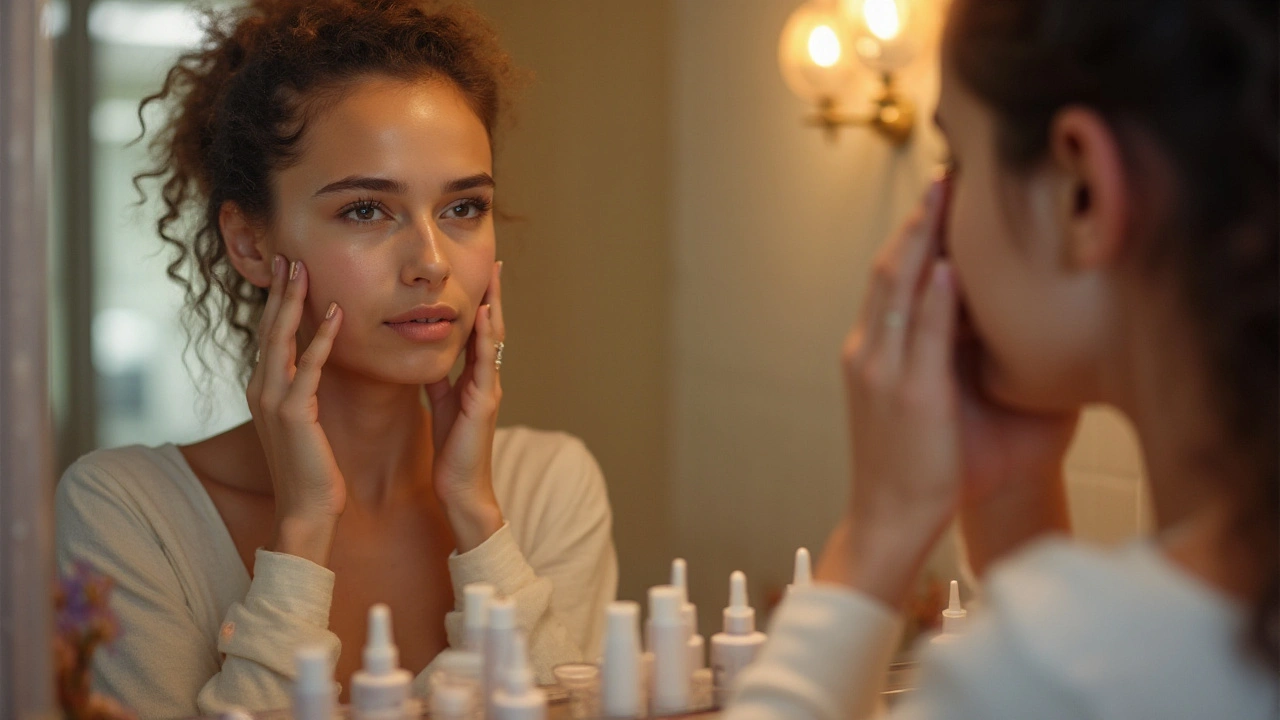Skincare Solutions: Real‑World Tips You Can Use Today
If you’ve ever Googled “how to fix my skin,” you know the internet is full of hype. The good news? You don’t need a chemistry degree to get clear, healthy skin. All it takes is a few smart habits and the right product choices. Below you’ll find straightforward steps that work for most people, no matter if you’re battling breakouts or just want a smoother look.
Quick Fixes for Everyday Skin Woes
The first thing to nail down is hydration. Drinking water helps, but the real game‑changer is a lightweight moisturizer that locks in moisture without feeling greasy. Look for ingredients like hyaluronic acid or glycerin – they pull water into the skin and keep it there.
Next up: sunscreen. Even on cloudy days, UV rays cause damage that shows up as dark spots or fine lines later. A broad‑spectrum SPF 30+ applied every morning is enough; just reapply if you’re outside for long periods.
A gentle cleanser is a must‑have. Skip anything with harsh sulfates; they strip natural oils and trigger more oil production, which can lead to breakouts. Wash your face twice a day with lukewarm water – hot water dries out the skin, cold water doesn’t clean well.
Choosing the Right Product for Your Skin Type
If you’re prone to acne, focus on ingredients that regulate oil and calm inflammation. Salicylic acid unclogs pores, while niacinamide reduces redness. Use a thin layer after cleansing and before moisturizer – it won’t feel heavy.
For dry or sensitive skin, avoid alcohol‑based toners and opt for calming formulas with aloe or chamomile. A barrier‑repair cream containing ceramides can restore the skin’s protective layer overnight.
Natural options are getting popular, but they’re not magic. Green tea extract offers antioxidant benefits, and rosehip oil provides vitamin C for brightening. Mix a few drops into your moisturizer if you like a DIY approach – just test on a small patch first.
Finally, build a simple routine and stick with it. Consistency beats occasional “miracle” treatments every time. Start with cleanse, treat (serum or spot), moisturize, and protect (sunscreen). Add extra steps like exfoliation only 1‑2 times a week; over‑scrubbing can damage the skin’s barrier.
Remember, your skin reacts to what you feed it – both topically and internally. A balanced diet rich in fruits, veggies, and omega‑3 fats supports a clearer complexion. Pair these habits with the tips above, and you’ll see steady improvement without expensive gadgets or confusing jargon.
This article explores six effective alternatives to Isofair for treating acne. From Retinoids and Benzoyl Peroxide to natural solutions like Tea Tree Oil, we break down the pros and cons of each. Learn about skincare kits like Paula's Choice and Murad Acne Control and find the best fit for your needs. Consider factors such as skin type, potential irritation, and product formulation in making an informed choice.
Jan, 6 2025

